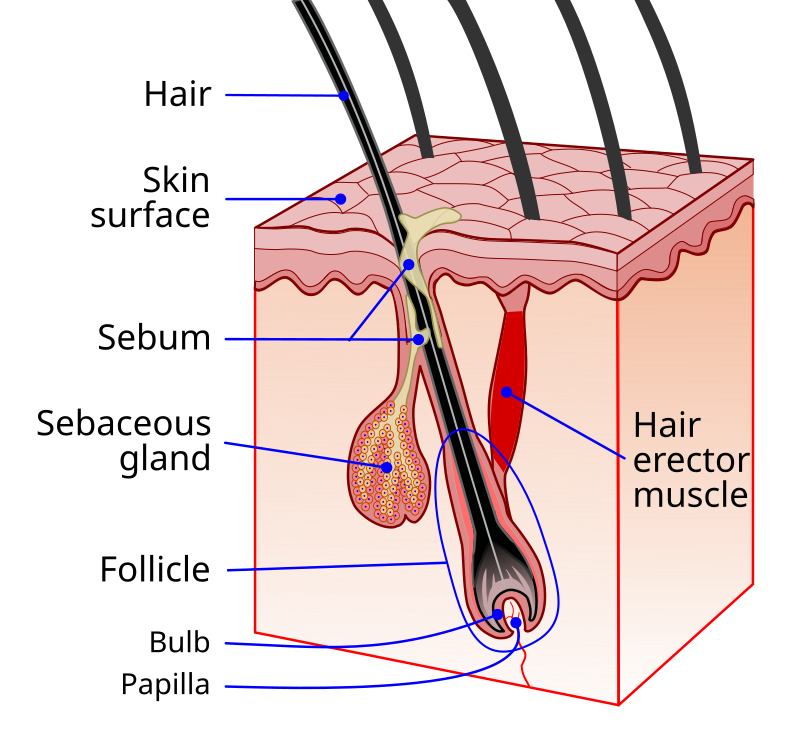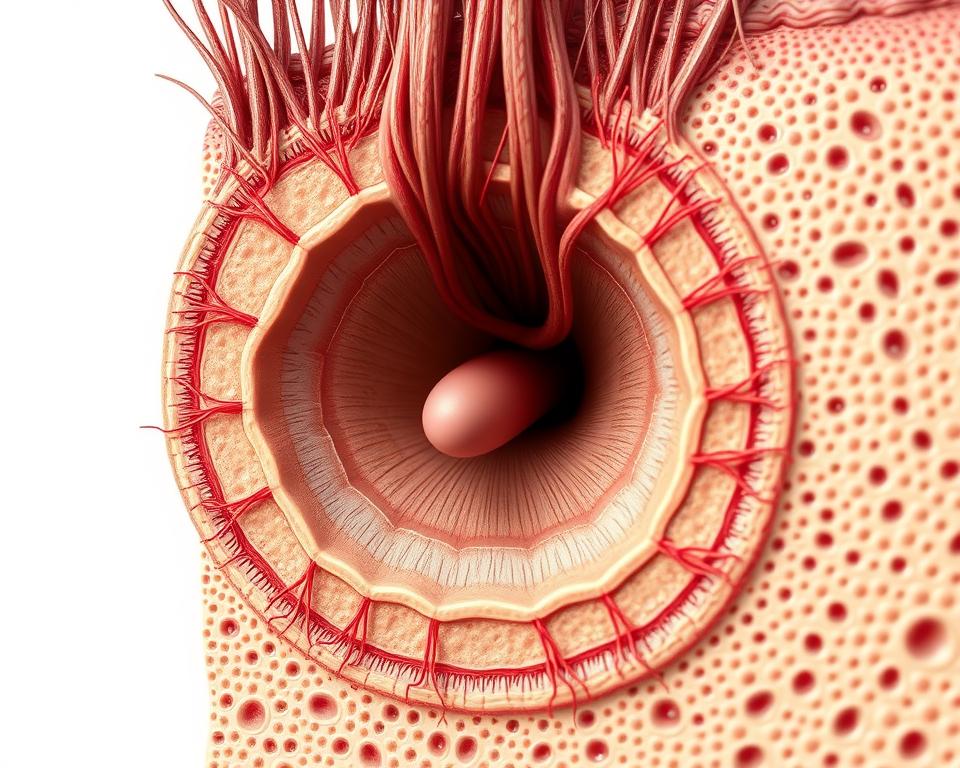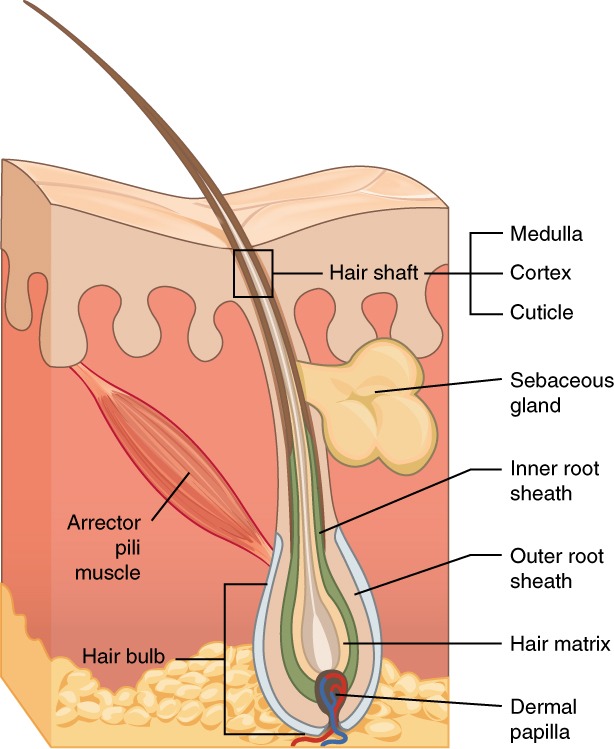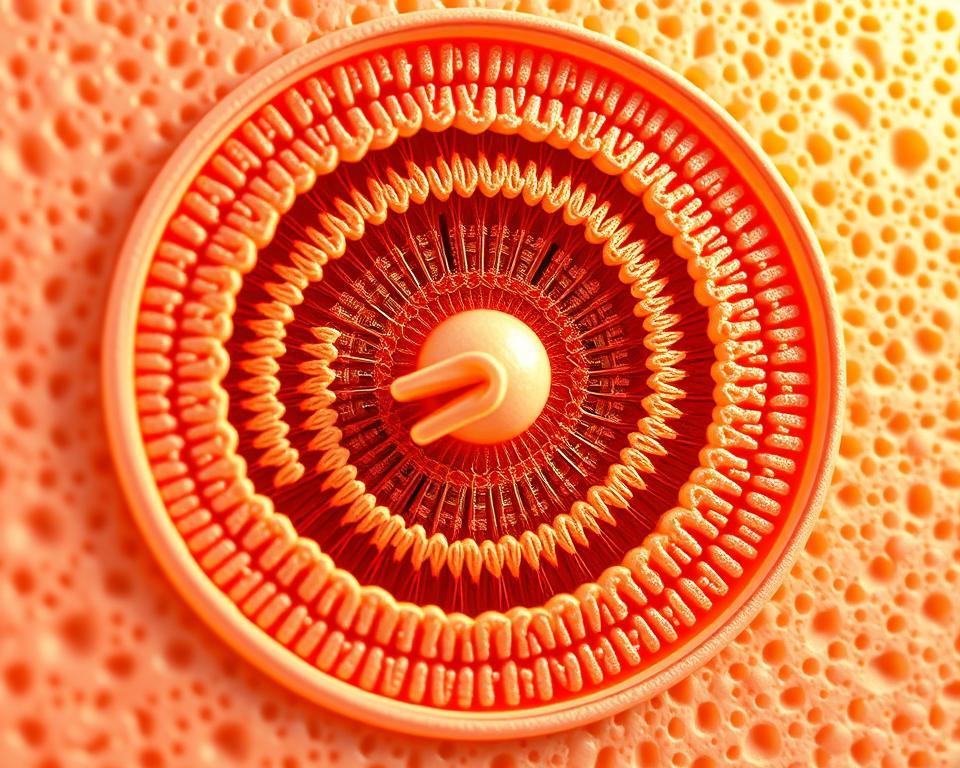Ever wondered what makes your hair grow? Hair roots play a big role in this process. Knowing about hair root definition, cell, and anatomy is key for healthy hair. Your hair root is the base of your hair, and its structure and function are vital for growth.
Curious about how hair roots affect your hair’s health? The hair root definition is linked to the hair root cell, which makes new hair cells. Learning about hair root anatomy helps you see why good hair care is important.
Key Takeaways
- Understanding hair root structure and function is vital for maintaining healthy hair
- The hair root definition is closely tied to the hair root cell and hair root anatomy
- Proper hair care is essential for promoting healthy hair growth
- The hair root plays a critical role in producing new hair cells
- Grasping the concept of hair root anatomy can help you appreciate the importance of proper hair care
- Healthy hair roots are essential for achieving strong, vibrant hair

Understanding the Hair Root System
Exploring hair care means learning about the hair root system. It includes the hair root and follicle. Knowing how hair grows and how to keep it healthy is key. The hair root bulb is important, and its spot in the skin affects hair health.
The hair root system is complex. It has the hair root, follicle, and surrounding tissue. Let’s look at each part to understand it better.
Basic Hair Root Definition
A hair root is the base of a hair strand. It’s closely linked to the hair follicle. The follicle is a small tube in the skin that feeds the hair root.
Location in the Skin
The hair root sits in the dermal layer of the skin. This layer is just under the epidermis. It’s where the hair root gets nutrients and oxygen for growth.
Relationship to Hair Shaft
The hair shaft is the part of the hair you see. It grows out of the skin. The health of the hair root affects the hair shaft’s strength and look. A healthy root and follicle mean a strong, vibrant hair shaft.
Knowing about the hair root system helps you care for your hair better. This includes the hair root bulb and its role in hair growth. With this knowledge, you can choose the right hair care products and routines. This ensures your hair gets the best care to thrive.

The Essential Components of Hair Roots
Knowing what makes up hair roots is key to keeping your hair healthy. The cells in the hair root are vital for growing strong hair. Damage to these cells can harm your hair roots.
The hair root follicle is a complex part that helps hair grow. It’s surrounded by muscles that help control hair growth. The cells in the hair root are important for making hair. Problems with these cells can cause hair loss or damage.
To keep your hair roots healthy, use gentle hair care products. Avoid too much heat styling and protect your hair from the environment. A healthy follicle is essential for strong hair. Damage to it can lead to hair loss.
- Avoid excessive heat styling
- Use gentle hair care products
- Protect your hair from environmental damage
- Keep a healthy diet and lifestyle
Understanding hair roots and keeping the follicle healthy can prevent damage. The cells in the hair root are key to hair growth. Taking care of your hair root follicle is vital for your hair’s health.
Hair Root Structure And Function: A Detailed Overview
Knowing how hair roots work is key to having healthy hair. Many things affect hair root growth, like your genes, diet, and health. The phases of hair root growth, anagen, catagen, and telogen, greatly influence hair length and thickness.
A hair root image can show you a lot about hair roots. Looking at a hair root image can help spot problems like split ends or breakage. These issues can be fixed with the right hair care and diet.
- Cellular organization: The hair root is made of special cells that help grow hair.
- Structural elements: A protective layer of cells surrounds the hair root, giving it nourishment and support.
- Functional components: The hair root has tiny blood vessels that bring oxygen and nutrients to the hair follicle.
Understanding hair root growth, its phases, and images can help you grow healthy hair. This knowledge helps keep your hair full and vibrant.
The Hair Root Bulb: Your Hair’s Command Center
Knowing where the hair root is located is key to understanding hair growth. The hair root bulb is at the base of the hair follicle. It’s surrounded by nerve cells that control hair growth and react to different signals.
The hair root structure is quite complex. It has many layers of cells working together to grow hair. The hair root bulb is where hair growth starts. Keeping it healthy is vital for strong hair.
Some important things about the hair root bulb are:
- It’s located at the base of the hair follicle, keeping the hair in place.
- It controls hair growth through the hair root nerve plexus.
- It’s made of many layers of cells that help grow hair.
Understanding the hair root location and its nerve plexus shows how complex hair growth is. This knowledge helps you care for your hair better. It promotes healthy growth and lowers the chance of hair problems.

Blood Supply to the Hair Root
Knowing how blood gets to the hair root is key for healthy hair. The hair root, with its hair root cell, grows hair. It needs a steady blood supply for nutrients and oxygen. When looking into hair root faq, it’s important to know about the hair root’s anatomy and its need for blood.
The blood vessels around the hair root are vital. They carry nutrients and oxygen to the hair root cell. A healthy network of blood vessels is needed for the hair root’s health.
Vascular Network
The vascular network is complex. It supplies the hair root with what it needs for growth. This network includes:
- Arterioles: small blood vessels that carry oxygenated blood to the hair root
- Capillaries: tiny blood vessels that allow for the exchange of nutrients and oxygen with the hair root cell
- Venules: small blood vessels that carry deoxygenated blood away from the hair root
Nutrient Delivery System
The nutrient delivery system gives the hair root cell what it needs to grow. It depends on the vascular network to bring proteins, vitamins, and minerals to the hair root.
Understanding the blood supply to the hair root is important. It helps us see why keeping the hair root healthy is key. This knowledge is vital for solving hair root problems and keeping hair healthy, making it a key part of hair root faq.
The Role of Hair Root Cells
Understanding hair root cells is key to knowing how hair grows. These cells help develop and keep hair roots healthy. Hair roots anchor the hair and let nutrients and oxygen reach the hair shaft.
Hair root cells are vital for hair growth. They work hard to keep your hair healthy. Think of them as the base of your hair, giving it the support and nutrients it needs.
Some important things about hair root cells and their role in hair growth include:
- Cell division and proliferation: Hair root cells divide and multiply to form new hair cells, contributing to hair growth.
- Nutrient uptake: Hair root cells absorb nutrients and oxygen from the bloodstream, which are then used to nourish the hair shaft.
- Hair root maintenance: Hair root cells help maintain the health and integrity of the hair root, ensuring that it remains anchored in place.
In summary, hair root cells play a big role in hair growth and health. By understanding their role, you can appreciate how important they are for strong and healthy hair.
Understanding Hair Root Growth Cycles
Exploring hair root growth reveals a complex process. It involves many cellular and structural elements. Knowing these phases helps keep your hair healthy and solves problems. Seeing a hair root image can make the process clearer.
The main phases are anagen, catagen, and telogen. These phases affect your hair’s length and health. The anagen phase is when hair grows, lasting 2 to 6 years. The catagen phase is short, lasting about two weeks, preparing for the resting phase. The telogen phase is the resting phase, lasting about three months, before the hair sheds.
- Anagen phase: active growth phase, lasts 2-6 years
- Catagen phase: transitional phase, lasts about 2 weeks
- Telogen phase: resting phase, lasts about 3 months
Understanding hair root growth phases helps you care for your hair better. A healthy hair root location is key for strong and vibrant hair.
Common Hair Root Problems and Solutions
Exploring hair care means knowing about common hair root issues. Hair root damage is a big problem that can cause hair loss and thinning. It’s often due to too much heat styling, harsh chemicals, and bad hair care habits.
To avoid hair root damage, keeping your hair root cells healthy is key. Use gentle hair products, cut down on heat styling, and shield your hair from the environment. A healthy hair root follicle helps your hair grow and prevents loss.
Some common hair root problems include:
- Hair root damage from too much heat or harsh chemicals
- Bad hair root cell function from poor diet or stress
- Hair root follicle issues like clogged pores or inflammation
Knowing these issues and how to prevent them helps your hair grow strong and healthy. Use gentle hair care, protect your hair from the environment, and eat well. This supports healthy hair root cell function and hair root follicle health.
The Nerve Supply of Hair Roots
Knowing about the nerve supply of hair roots is key to keeping your hair healthy. The hair root nerve plexus helps control hair growth. It’s like a complex network that sends and gets signals, making sure your hair grows strong.
Damage to this system can cause hair loss or slow growth. The structure of the hair root is closely tied to the nerve supply. Any harm to it can affect your hair’s health.
Looking into the hair root faq, you might ask how the nerve supply impacts hair growth. The nerves around the hair root pick up on touch, pressure, and vibration. This info goes to the brain, helping control hair growth.
The neural networks behind this are complex and not fully grasped. Yet, studies show they’re vital for healthy hair.
- The hair root nerve plexus is a network of nerves that surrounds the hair root
- The nerve supply is responsible for detecting sensations such as touch and pressure
- The neural networks involved in hair growth are complex and not fully understood
By learning about the nerve supply of hair roots, you can help keep your hair healthy. This means reducing stress, eating well, and avoiding harsh chemicals that harm the hair root.
Maintaining Healthy Hair Roots
To keep your hair roots healthy, it’s key to know the hair root definition and its role. The hair root is the base of your hair, and its health is vital for your hair’s well-being. A healthy hair root cell is essential for hair growth and development. Understanding the hair root anatomy helps prevent damage.
There are several ways to keep your hair roots healthy. First, make sure you’re getting the right nutritional requirements for your hair. Eating a balanced diet with vitamins and minerals like iron, zinc, and biotin is important. Also, be mindful of environmental factors that can harm your hair roots, such as harsh chemicals, heat styling, and too much sun.
Here are some protective measures for healthy hair roots:
- Use gentle hair care products without harsh chemicals
- Avoid too much heat styling and use a heat protectant spray
- Wear a hat or use a hair serum with SPF to protect from the sun
- Get regular trims to prevent split ends and breakage
By following these tips, you can keep your hair healthy, strong, and looking great. Remember, a healthy hair root definition is the secret to beautiful, luscious hair. It’s important to care for your hair root cell and hair root anatomy for this.
Hair Root Disorders and Treatment Options
Understanding hair root disorders is key to keeping your hair healthy. Damage to hair roots can happen for many reasons, like bad hair care, genetics, or medical issues. When the hair root cells don’t work right, it can cause hair loss or thinning.
The hair root follicle is where hair grows from. Damage here can stop hair from growing. Hair root disorders include damage, cell function problems, and follicle issues. These can be caused by too much heat styling, harsh chemicals, or hormonal imbalances.
Seeing a dermatologist or healthcare professional is important. They can tell you the best treatment, which might include medicines, lifestyle changes, or other therapies.
Treatment for hair root disorders depends on the cause. For example, if heat styling causes damage, using less heat or protective products can help. If cell function is a problem, medicines or supplements might be needed. Eating well, reducing stress, and getting regular haircuts also help.
Preventing hair root disorders is easier than treating them. Protecting your hair with gentle products, avoiding too much heat, and eating well can help. If you have hair root problems, get medical help to fix them and prevent more damage.
Conclusion: Understanding Your Hair’s Foundation
Understanding your hair roots is key to having healthy, vibrant hair. This article has given you a detailed look at your hair’s foundation. It covers everything from the hair root bulb to the blood supply and nerve networks.
By knowing how your hair roots work, you can take better care of them. This means eating right, protecting your hair from the environment, and more. Your hair roots are the base of your hair’s health and look. Taking care of them is the first step to perfect hair.
Hair Root FAQ
What is the definition of a hair root?
The hair root is the part of the hair that grows in the skin. It’s the deepest part of the hair follicle. It’s where the hair shaft grows from.
Where is the hair root located in the skin?
The hair root is in the skin, inside the hair follicle. The follicle is in both the epidermis and dermis. It helps the hair grow.
What is the relationship between the hair root and the hair shaft?
The hair root connects directly to the hair shaft. It produces the hair. The hair shaft comes out of the skin through the follicle, getting support from the root.
What are the essential components of the hair root?
The hair root has two key parts: the hair root cell and the follicle. The cell makes the hair shaft. The follicle gives the hair a place to grow.
What is the cellular organization of the hair root?
The hair root has special cells like keratinocytes and melanocytes. These cells work together to make the hair shaft and help it grow.
What are the structural elements of the hair root?
The hair root has parts like the bulb, sheath, and papilla. These parts support hair growth.
What are the functional components of the hair root?
The hair root’s functions include making the hair shaft and controlling its growth. It also keeps the follicle healthy.
What is the role of the hair root bulb?
The hair root bulb is key for hair growth. It has the cells that make the hair shaft.
How does the blood supply to the hair root support hair growth?
Blood brings nutrients, oxygen, and more to the hair root. This is vital for hair growth. The blood network in the root is important for healthy hair.
What is the role of hair root cells in hair growth?
Hair root cells make the hair shaft and keep the follicle healthy. They are essential for hair growth and health.
Can you explain the different phases of the hair root growth cycle?
The growth cycle has three phases: anagen (growth), catagen (transition), and telogen (rest). Knowing these phases helps keep hair healthy.
What are some common hair root problems and how can they be addressed?
Problems like damage, cell dysfunction, and follicle issues can occur. Treatments include fixing the cause, using protective measures, and living healthily.
How is the nerve supply to the hair root important for hair health?
The nerve supply helps hair health by providing sensory functions and supporting growth. The nerve plexus in the root is key.
What steps can I take to maintain healthy hair roots?
Eat well, avoid harsh chemicals, and use gentle products. These steps help keep hair roots healthy.
What are some common hair root disorders and how can they be treated?
Disorders like damage, cell dysfunction, and follicle problems can be treated. Methods include fixing the cause, using therapies, and seeking medical help if needed.


